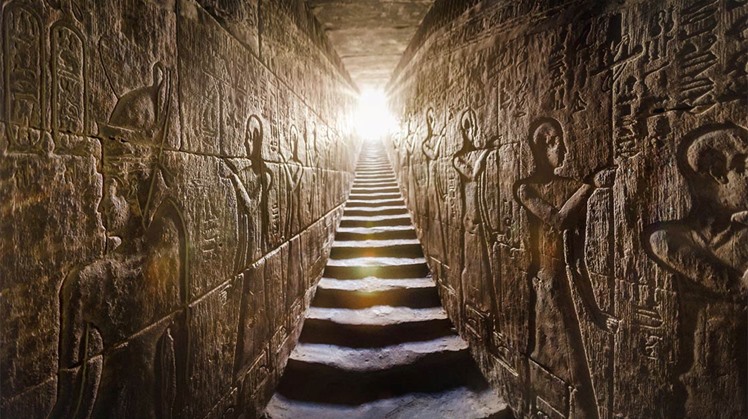Edfu city is located between Luxor and Aswan in the southern area of Egypt. The city, which is situated on the west bank of the Nile, is world famous for its temple, which was built during the Ptolemaic period. The Temple of Edfu , dedicated to the god Horus, is the second largest temple in Egypt. After the Roman period, the temple was gradually buried by desert sand, and silt from the Nile. As a result, the temple was forgotten, and was only rediscovered during the 19 th century. Apart from its size and state of preservation, the Temple of Edfu is also notable for its large number of inscriptions, collectively known as the Edfu Texts, which seem to cover every available surface.
Temple of Edfu In the Old, Middle and New Kingdom Periods
The city of Edfu is known also by several other names. The ancient Egyptians, for instance, knew the city as Behdet, while the Greeks and Romans called it Apollonopolis. This latter name was a reference to the city’s chief god, Horus, whom the Greeks identified with their own god Apollo. Although Edfu is most famous for its Ptolemaic temple , the city’s history stretches much further back in time.
For instance, archaeological excavations in the western and northern parts of the town have uncovered material from the earlier periods of the town’s occupation. These include mastaba tombs from the Old Kingdom , and burials dating to the Middle Kingdom . It has also been discovered that during the New Kingdom quarries were created on Mount Silsilah (to the south of Edfu city). Sandstone was procured from these quarries and transported all over Egypt for construction works.
During the New Kingdom, a temple to Horus was built at Edfu. This temple was smaller than the current structure, and longer exists. The only element that remains of this New Kingdom temple is its pylon (a Greek term for the monumental gateway of an Egyptian temple), which is located to the east of the new temple, and faces the landing stage on the Nile. This is due to the fact that the Ptolemies built a new temple on the site of the older one.
The world-famous Temple of Edfu pylon or monumental gateway. (Walwyn / Flickr)
The world-famous Temple of Edfu pylon or monumental gateway. (Walwyn / Flickr)
The pharaoh who began the construction of the Temple of Edfu was Ptolemy III Euergetes, the third ruler of Ptolemaic Kingdom . During his reign, which lasted from 246 to 222/1 BC, Ptolemy managed to reunite Egypt and Cyrenaica, and triumphed over the Seleucids during the Third Syrian War. Egypt’s native temples benefitted greatly from Ptolemy III’s rule. Apart from initiating the building the Temple of Edfu, Ptolemy III also made donations to many other temples, and restored the divine statues plundered from the temples by the Persians. Incidentally, his epithet, ‘Euergetes’, means ‘Benefactor’.
Although the construction of the Temple of Edfu began in 237 BC, it was not completed by the time of Ptolemy III’s death. Nevertheless, the building of the temple continued. It was finally finished in 57 BC, during the reign of Ptolemy XII Auletes. The construction of the temple took such a long time to complete due to the many nationalistic uprisings in Upper Egypt during that period which disrupted the construction process.
The Ptolemies were not only facing internal problems, but external ones as well. By the time of Ptolemy XII, the fortunes of Ptolemaic Kingdom had waned, and it was no longer the mighty and prosperous state it once was. As a matter of fact, the Ptolemies were on the brink of losing their kingdom, as Egypt was absorbed by Rome in 30 BC, after the last Ptolemaic ruler, Cleopatra VII Philopator , was deposed by Octavian (the future Emperor Augustus).
Closeup of the god Horus statue in front of the pylon temple entranceway (Walwyn / Flickr)
article originally published on ancient-origins.net
 Mon, Aug. 10, 2020
Mon, Aug. 10, 2020